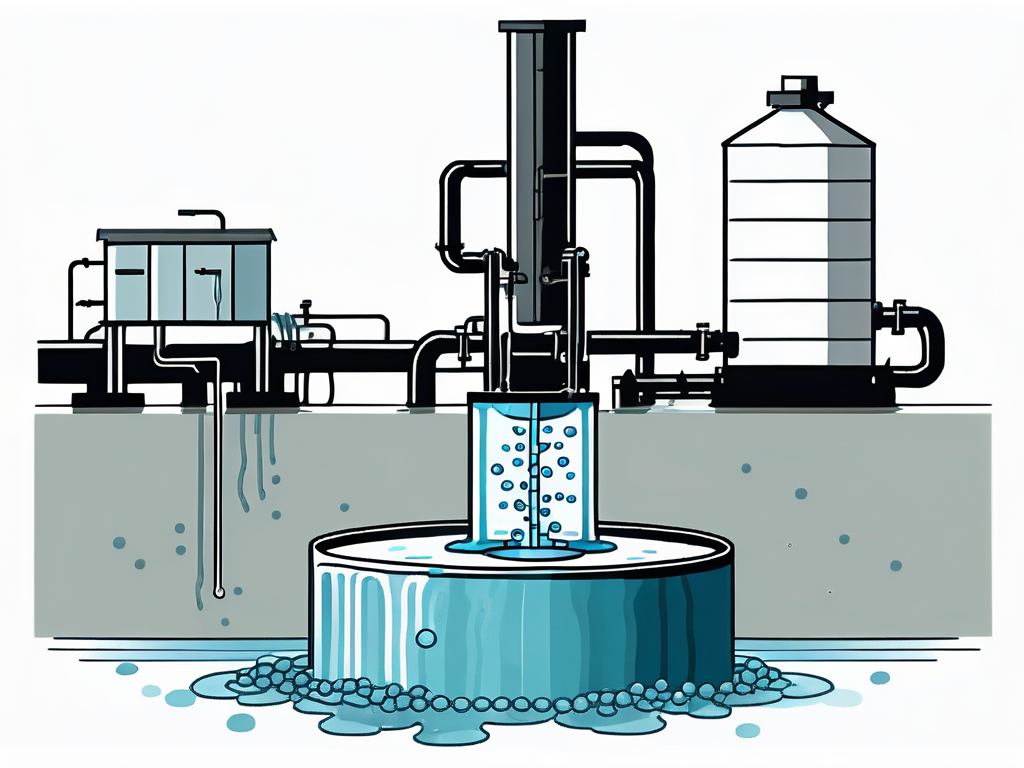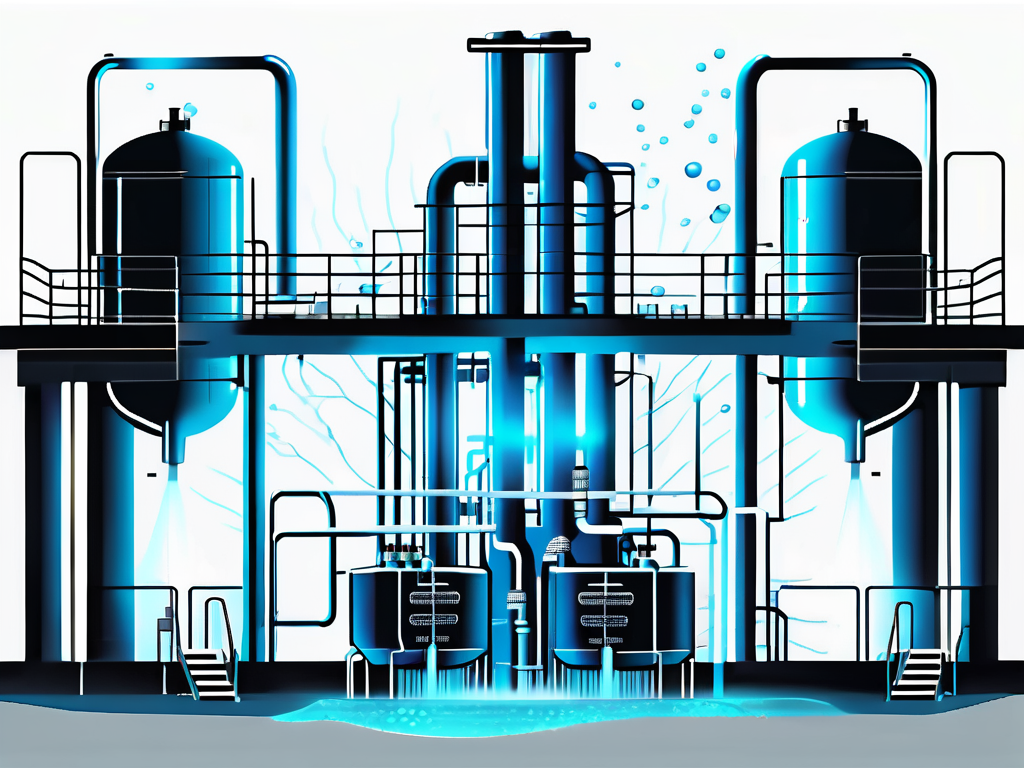
Zero Valent Iron: Wastewater Treatment Explained
Zero Valent Iron (ZVI), also known as elemental or metallic iron, is a powerful tool in the field of wastewater treatment. This article aims to provide a comprehensive understanding of the role and application of ZVI in wastewater treatment, including its chemical properties, the processes it is involved in, and the benefits and challenges associated with its use.
Wastewater treatment is a critical aspect of environmental protection, and the use of ZVI has emerged as a promising technology due to its ability to remove a wide range of pollutants. This article will delve into the intricacies of ZVI, providing a detailed explanation of its role in wastewater treatment.
Chemical Properties of Zero Valent Iron
Zero Valent Iron is characterized by its zero oxidation state, meaning it has not lost or gained any electrons and is in its elemental form. This property makes it highly reactive, particularly towards compounds that can be reduced, making it ideal for use in wastewater treatment.
ZVI has a high electron density, which allows it to donate electrons to other compounds, thereby reducing them. This process is known as reduction, and it is the basis of ZVI's effectiveness in wastewater treatment. The following sections will delve deeper into the chemical reactions involved in this process.
Redox Reactions
Redox reactions are a key aspect of the chemical processes involved in ZVI wastewater treatment. In these reactions, ZVI acts as an electron donor, reducing pollutants in the wastewater. This is often coupled with the oxidation of the iron, which is transformed into iron oxides or hydroxides.
These reactions can be catalyzed by the presence of certain substances, such as oxygen or certain types of bacteria, which can enhance the reactivity of the ZVI. This can lead to more efficient pollutant removal, but also to the formation of byproducts, which will be discussed in a later section.
Adsorption
Besides redox reactions, ZVI can also remove pollutants from wastewater through a process known as adsorption. This involves the attachment of pollutant molecules to the surface of the ZVI particles. The effectiveness of this process depends on several factors, including the size and shape of the ZVI particles, the concentration of pollutants, and the pH of the wastewater.
Adsorption is particularly effective for removing heavy metals from wastewater. These metals can bind to the surface of the ZVI, effectively removing them from the water. However, the capacity of the ZVI for adsorption is limited, and once all the available sites on the surface are occupied, the effectiveness of the process decreases.
Application of Zero Valent Iron in Wastewater Treatment
ZVI is used in a variety of wastewater treatment processes, due to its versatility and effectiveness. It can be used in both aerobic and anaerobic conditions, and can remove a wide range of pollutants, including organic compounds, heavy metals, and certain types of bacteria.

The following sections will provide a detailed overview of the different applications of ZVI in wastewater treatment, including the specific processes involved and the types of pollutants that can be removed.
Removal of Organic Compounds
Organic compounds, including pesticides, pharmaceuticals, and industrial chemicals, are a common type of pollutant in wastewater. ZVI is highly effective at removing these compounds, through a combination of redox reactions and adsorption.
The specific processes involved depend on the type of organic compound. For example, chlorinated compounds can be dechlorinated through a redox reaction, while other types of compounds can be degraded or transformed into less harmful substances. The efficiency of these processes can be enhanced by optimizing the conditions, such as the pH and temperature, and by using catalysts.
Removal of Heavy Metals
Heavy metals, such as lead, mercury, and arsenic, are another common type of pollutant in wastewater. These metals can be highly toxic and can accumulate in the environment, posing a serious threat to human health and ecosystems. ZVI is highly effective at removing these metals, primarily through adsorption.
The process involves the attachment of the metal ions to the surface of the ZVI particles, effectively removing them from the water. The efficiency of this process can be enhanced by optimizing the conditions, such as the pH and the concentration of the metals. However, the capacity of the ZVI for adsorption is limited, and once all the available sites on the surface are occupied, the effectiveness of the process decreases.
Benefits and Challenges of Using Zero Valent Iron
While ZVI has many benefits as a wastewater treatment technology, it also comes with certain challenges. The following sections will provide a detailed overview of these benefits and challenges, providing a balanced view of the use of ZVI in wastewater treatment.
Understanding these aspects is crucial for making informed decisions about the use of ZVI, and for optimizing its application in different contexts.
Benefits
One of the main benefits of ZVI is its versatility. It can be used in a wide range of conditions, and can remove a wide range of pollutants, making it a highly flexible tool for wastewater treatment. Furthermore, it is relatively cheap and easy to produce, making it a cost-effective solution.
Another benefit is its effectiveness. ZVI can remove pollutants to a greater extent than many other treatment technologies, and it can do so in a relatively short amount of time. This makes it an efficient solution for wastewater treatment, particularly in situations where a high level of pollutant removal is required.
Challenges
Despite its many benefits, ZVI also comes with certain challenges. One of the main challenges is the formation of byproducts. During the redox reactions, the iron is oxidized, leading to the formation of iron oxides or hydroxides. These byproducts can accumulate in the wastewater, leading to a decrease in the effectiveness of the treatment process over time.
Another challenge is the limited capacity of the ZVI for adsorption. Once all the available sites on the surface of the ZVI particles are occupied, the effectiveness of the adsorption process decreases. This means that the ZVI needs to be replaced or regenerated regularly, which can increase the cost and complexity of the treatment process.
Future Perspectives
Despite the challenges associated with the use of ZVI, it remains a promising technology for wastewater treatment. Research is ongoing to improve the effectiveness of ZVI and to overcome the challenges associated with its use.

Future perspectives include the development of new types of ZVI with enhanced reactivity, the use of catalysts to enhance the redox reactions, and the development of methods for regenerating the ZVI. These advancements could further increase the effectiveness and efficiency of ZVI in wastewater treatment, making it an even more valuable tool in the fight against water pollution.



